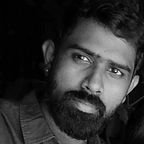Speculative design workshop
I would like to start with a few questions.
Have you ever had a crazy dream? If yes, how often it was very futuristic or you were triggered with a spark of idea?
“While asleep, I had an unusual experience. There was a red screen formed by flowing blood, as it were. I was observing it. Suddenly a hand began to write on the screen. I became all attention. That hand wrote a number of elliptic integrals. They stuck to my mind. As soon as I woke up, I committed them to writing.” -Srinivasan Ramanujan (mathematician)
Speculative design, sometimes called critical design or design fiction, asks us to zoom out beyond user centered design and ask what the effects of our designs could be on future societies.
What do you get out of this picture?
Sci-Fi movies, novels and series have always stayed ahead of the current world and tried to speculate future experiences. Sci-Fi script writers have influenced/inspired many innovators & designers both industrial and product design in later years.
Tech giants and organisations like Nike, Visa, Pepsi, Ford, and even NATO have on-boarded science fiction script writers to help them ideate futuristic products and strategies.
When we talk about speculative design it is essential to read Speculative everything. written by Anthony Dunne (Professor and head of the design interactions programme at the Royal College of Art) and Fiona Raby (Professor of industrial design at the university of applied arts in vienna.)
Insights from the book
Dreams are powerful.
They can also inspire us to imagine that things could be radically different than they are today, and then believe we can progress toward that imaginary world.
There are no more visions.
We don’t know how to fix the planet and ensure our survival. We are just hopeful.
When people think of design, most believe it is about problem solving. Even the more expressive forms of design are about solving aesthetic problems.
Speculative design thrives on imagination and aims to open up new perspectives.Create spaces for discussion and debate about alternative ways. To inspire and encourage people’s imaginations to flow freely. Design speculations can act as a catalyst for collectively redefining our relationship to reality.
Critical design uses speculative design proposals to challenge narrow assumptions, preconceptions, and givens about the role products play in everyday life.
Speculative design works to address issues and answer tough questions that we currently create for ourselves.
Four P’s (Possible, Plausible, Probable & Preferable)
Example:
Possible
Half of the earth would be covered with water. People will need automated cars that can fly, float and go deep sea waters.
Plausible
Earth would have lot of islands so people will need a car which is completely automated and run in water.
Probable
People will need completely automated cars for easy and safe community.
Preferable
People would build luxury houses over water bodies and might need cars automated cars that can transform into a boat.
Some prototype examples from book
Workshop snapshots
Key takeaways
UCD isn’t enough
“Speculative design gives designers an opportunity to stretch their imaginations and develop new and boundary-pushing systems and prototypes for the future.”
Explore future not current needs
Future cone exercise helps to conceptualize the future problems and requirements.
Trends research
and not UX research
Identify weak signals and strong signals.
A weak signal is an indicator of a potentially emerging issue, that may become significant in the future.
Generate future scenarios
What will happen?
What can happen?
How can a specific target be reached?
Advantage
Helps industries and human race to be ahead of the game.
Challenges
Market forces
In this revenue oriented product world, business and marketing goals impacts or forces designers to be working within a defined boundary
Atomisation and quick wins
We always strive towards quicks wins and individual successes that could block ourselves from high expectations or ideating an innovative solution.
Pessimism
As we saw human speculation trend chart earlier, we’ve always end up just having hopes of futuristic ideas rather than making it a reality or a elevating our expectation.
What if?
Always try to add this magical key word in your design process that could help you think from the future.
“Plan as if you’re going to live forever and live as if you’re going to die today!”
Thanks for reading!
